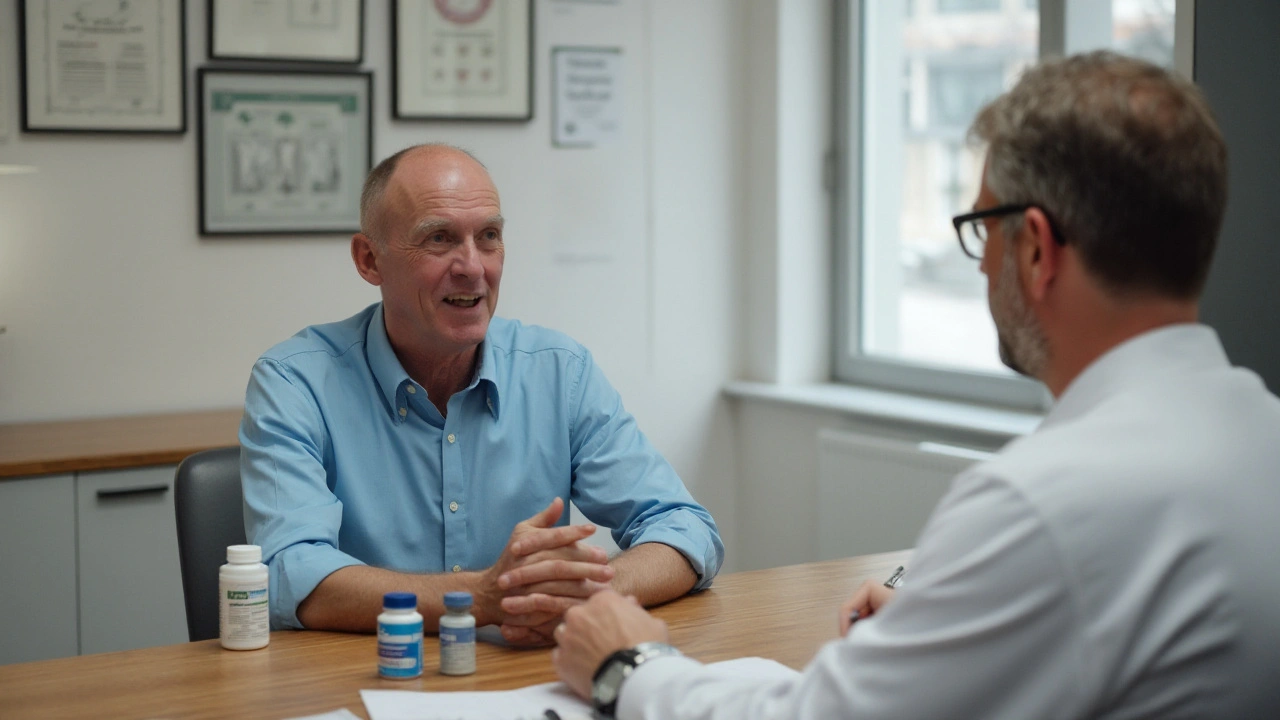Hair loss treatments: what actually works and how to pick one
Not all hair loss is the same. Some people lose a little at the crown, others have a widening part, and some notice sudden shedding. Before spending money on gadgets or supplements, know what type of hair loss you have and how quickly it’s progressing. That decision shapes the best treatment for you.
Medical treatments that help
Two options have the strongest evidence: topical minoxidil and oral finasteride. Minoxidil (foam or liquid) is applied to the scalp once or twice daily. You can expect to see slowing of hair loss in 3–6 months; fuller results may take up to a year. Common downsides are scalp irritation and the need to keep using it—stop, and gains often fade.
Finasteride is a prescription pill that blocks DHT, the hormone behind male pattern hair loss. Many people notice less shedding within a few months and thicker hair after about a year. It’s taken daily and must be continued to keep benefits. A small number of users report sexual side effects; discuss risks and benefits with your doctor.
Other meds and topical prescriptions exist for specific cases—like spironolactone for some women or topical finasteride formulations. These are worth discussing with a dermatologist who can tailor treatment to your sex, age, and cause of hair loss.
Procedural options and lifestyle fixes
Procedures range from low-level laser therapy (LLLT) to platelet-rich plasma (PRP) injections and hair transplants. LLLT devices can help when used regularly; PRP uses your blood to stimulate follicles and may need several sessions. Transplants move healthy follicles to thinning areas and give a permanent result, but they’re the most expensive and need a skilled surgeon.
Lifestyle matters too. Low iron, thyroid problems, rapid weight loss, and some medications can cause shedding. Getting simple blood tests can rule these out. Nutrition—enough protein, iron, vitamin D—and reducing harsh styling or tight hairstyles make a real difference for many people.
Supplements like biotin or saw palmetto get a lot of attention. They can help only if you have a specific deficiency or a mild hormone-related issue. Think of supplements as supportive, not a primary plan.
Timing is key: start treatments early when follicles are still active. Combine approaches for better results—for example, finasteride plus minoxidil often works better than either alone. Check expectations: most treatments slow loss and thicken existing hair; dramatic new hair isn’t guaranteed.
If you’re unsure where to start, book an appointment with a dermatologist or hair specialist. They’ll confirm the cause, review side effects and costs, and help you make a plan that fits your life and budget.
Top 5 Propecia Alternatives for Hair Loss in 2024
Exploring the top alternatives to Propecia in 2024, this article delves into various treatments for hair loss, each with unique benefits and drawbacks. From medications like Rogaine and Avodart to therapies like PRP and LLLT, and even surgical options such as hair transplants, find the right solution for your needs. Understand the effectiveness, side effects, and financial implications of these alternatives. Whether you're seeking drug-based treatments or a more natural approach, discover effective methods for combating hair loss.

